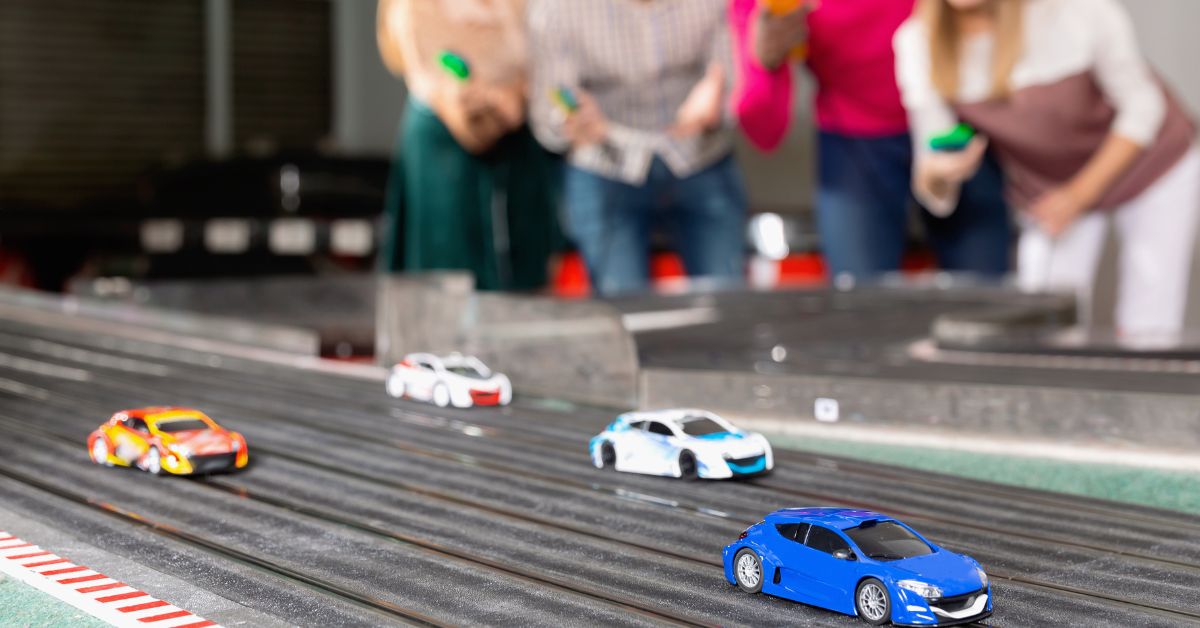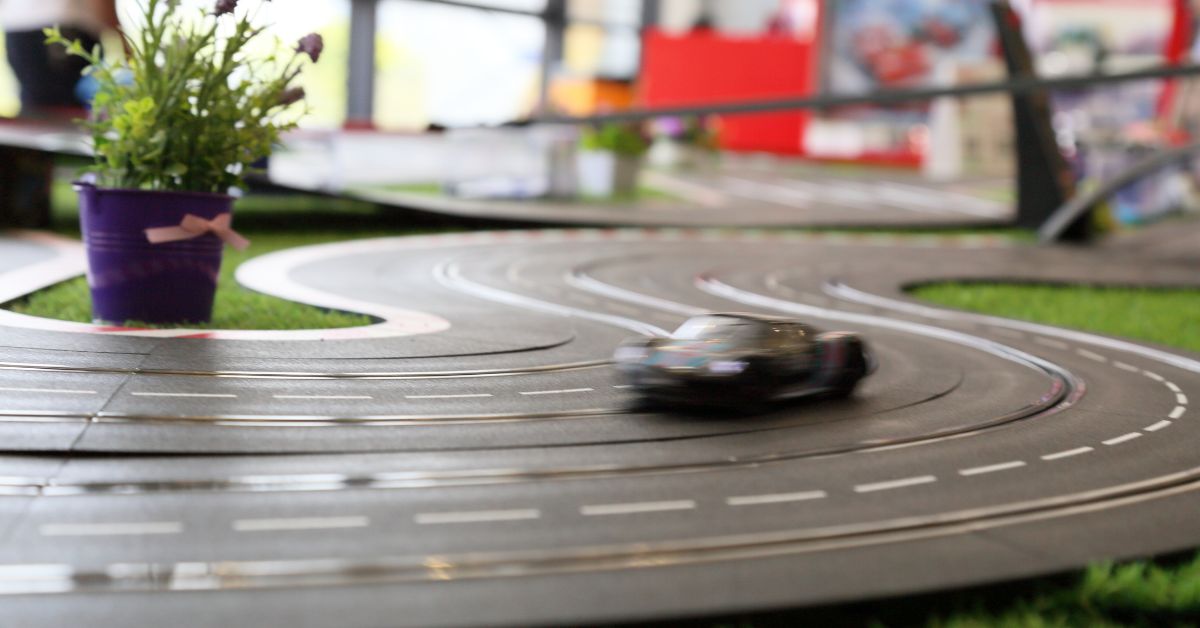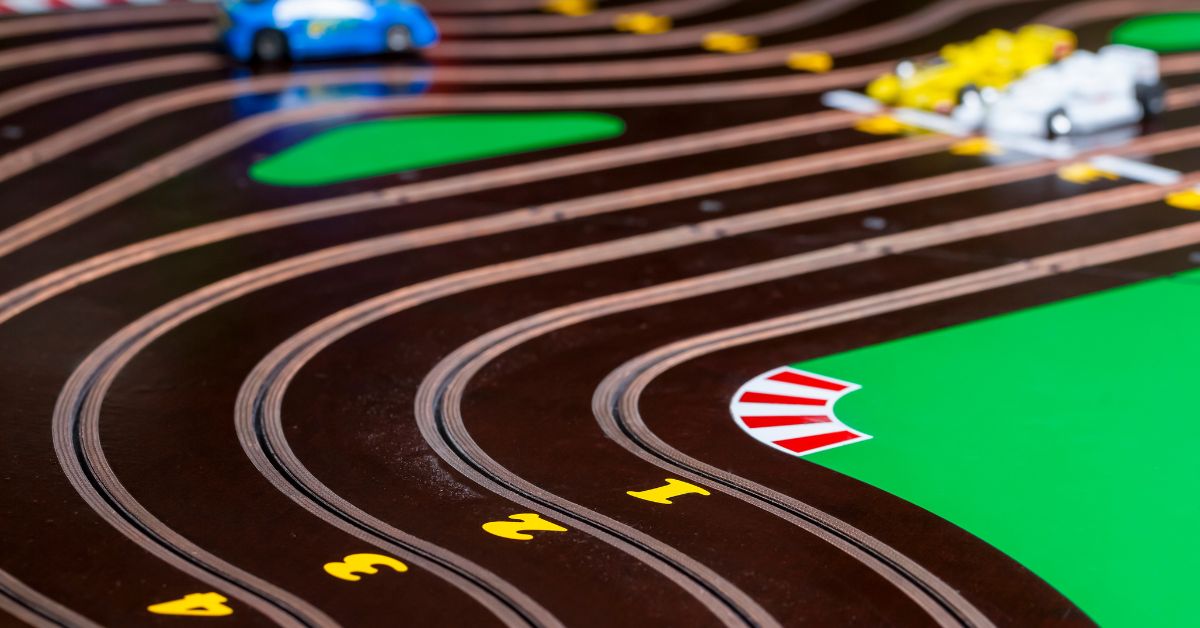The Evolution of Slot Cars: From Analog to Digital
People have been racing slot cars on metal tracks since 1912. Find out how this once simple toy has evolved into a high-tech, competitive sport.
by Theodore Hust • January 28, 2025
Slot car racing—think NASCAR on a much smaller scale—has been a popular pastime for many decades. In the early 1900s, Lionel Corporation produced the first electrically powered miniature racing car. These cars ran on metal tracks with a single groove, hence the name “slot car.” Early slot cars had a limited speed and were more of a toy than an actual racing experience. But as technology advanced, so did slot car racing.
Today, slot car racing has evolved into a highly competitive sport with large-scale events and devoted enthusiasts. There are different types of slot cars now, from the classic analog to more advanced digital cars. Let’s take a look at how slot cars have evolved over the years.
Analog Slot Cars: The Original Racing Experience

Analog slot cars are the ones that started it all. These cars have electric motors and run on traditional metal tracks with slots for the car’s guide pin. The guide pin keeps the car on the track and acts as a direct connection to the electric current by completing the circuit.
Racers can control the speed of their analog slot cars using a hand-held controller, which controls the voltage and, in turn, the speed of the car. The more power a racer applies, the faster the car will go. This simple yet effective control system made analog slot cars accessible to everyone and sparked the popularity of this hobby.
Analog slot cars are still popular today, especially among beginner racers or those looking for a more laid-back racing experience. The nostalgia factor also helps keep these classic cars relevant despite the emergence of more advanced technology.
Digital Slot Cars: The Next Level of Racing

As technology advanced, so did slot car racing. In the early 2000s, digital slot cars came to be. Multiple manufacturers, including Scalextric and Carrera, introduced their versions of digital slot cars. These cars are more complex than their analog counterparts and offer a more realistic racing experience.
Digital slot cars use advanced wireless technology to communicate with the track and controllers. This allows for multiple cars to race on the same track at the same time, each with its unique digital ID. Racers can also change lanes, overtake other cars, and even make pit stops using the hand-held controller. These features add an extra layer of strategy and excitement to the racing experience.
Digital slot cars also have more powerful motors and improved handling, making them faster and more precise on the track. This has attracted a new generation of racers drawn to the technical aspects and competitive nature of digital slot car racing.
A Timeline of Advancements in Slot Cars
Slot cars have come a long way since the early 1900s when they were just simple toys. They started as a basic, analog racing experience. Hobbyists then began modifying and customizing these cars with different motors, bodies, and tires to improve their performance. This led to the invention of digital slot cars and the introduction of advanced technology into the racing scene. Here’s a brief timeline of the key advancements in slot cars:
- 1912: Lionel Corporation debuts the first electrically powered miniature racing car, inspired by the Indianapolis 500 Speedway. This car runs on power from a toy train rail embedded in a slot between the tracks.
- 1930s: Scale model cars gain popularity. Manufacturers model these cars after real vehicles for collectors. They’re powered by small internal combustion engines. Initially using spark ignition, they later transition to glow plug engines. People could race these cars, but they lacked speed and steering control.
- 1936: An unknown person files a patent for a slot car track equipped with an electric motor.
- 1940s: In Britain, hobbyists start tinkering with electric cars powered by handmade motors.
- 1950s: Small model train motors become available, fueling further innovations in electric slot car design.
- 1954: In the UK, the Southport Model Engineering Society, looking to dodge patent hassles, builds an electric racecourse. This lays the groundwork for electric rail and slot racing.
- 1955–1956: Slot car racing clubs begin to form in the US and UK, fostering a growing community of enthusiasts.
- 1957: Minimodels converts its Scalex 1:30 (later, 1:32) clockwork racers to electric, launching the iconic Scalextric line. The same year, Victory Industries rolls out the VIP line of slot-guided models.
- 1959: Playcraft, a division of Mettoy, begins producing these models in the UK, while Aurora Plastics Corp. introduces successful HO vibrator sets in the US.
- 1960s: The introduction of Scalextric’s 1:32 cars and Aurora’s “Model Motoring” HO line kicks off a slot car mania that defines the decade.
- 1970s: Slot cars hit a speed bump as newer toys and video games steal the spotlight. Many clubs close, and tracks gather dust.
- 1980s: Slot car enthusiasts continue to race, but the popularity of the hobby declines.
- 1990s: Thanks to advances in computer design and 3D printing, slot cars make a comeback. The models are more detailed, the races are more intense, and clubs start reopening.
- Early 2000s: Digital slot cars revolutionize the sport and attract a new generation of racers.
- 2012: Mak Wing Kwong, an inventor from Hong Kong, introduces his slot car system. The “Dynamic Motion Express” system features multiple parallel slots that allow drivers to choose different lanes. This adds another dynamic to slot car racing and continues to evolve the sport.
Slot cars are barely 100 years old, but in that short time, they’ve made impressive advancements in technology and popularity. From the early days of analog cars to today’s state-of-the-art digital models, slot car racing has become a thrilling sport enjoyed by people of all ages around the world. With continued innovations, who knows what lies ahead for this hobby?
If you want to join the refueled slot car craze, come shop with Carrera Slots, a distributor of digital and analog slot cars, sets, and accessories! Whether you prefer the classic feel of analog or the advanced features of digital, we have individual slot cars and slot car racing sets from Carrera and Scalextric to satisfy every racer. Choose your car, customize your track, and let the races begin! See you at the finish line.

